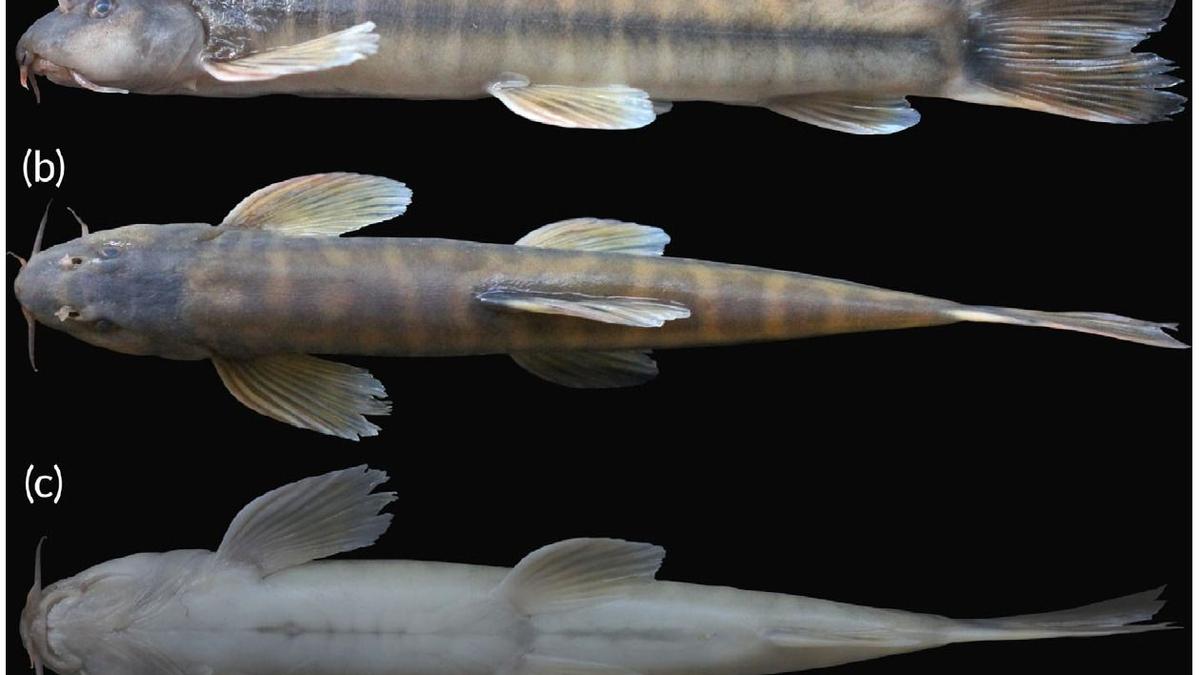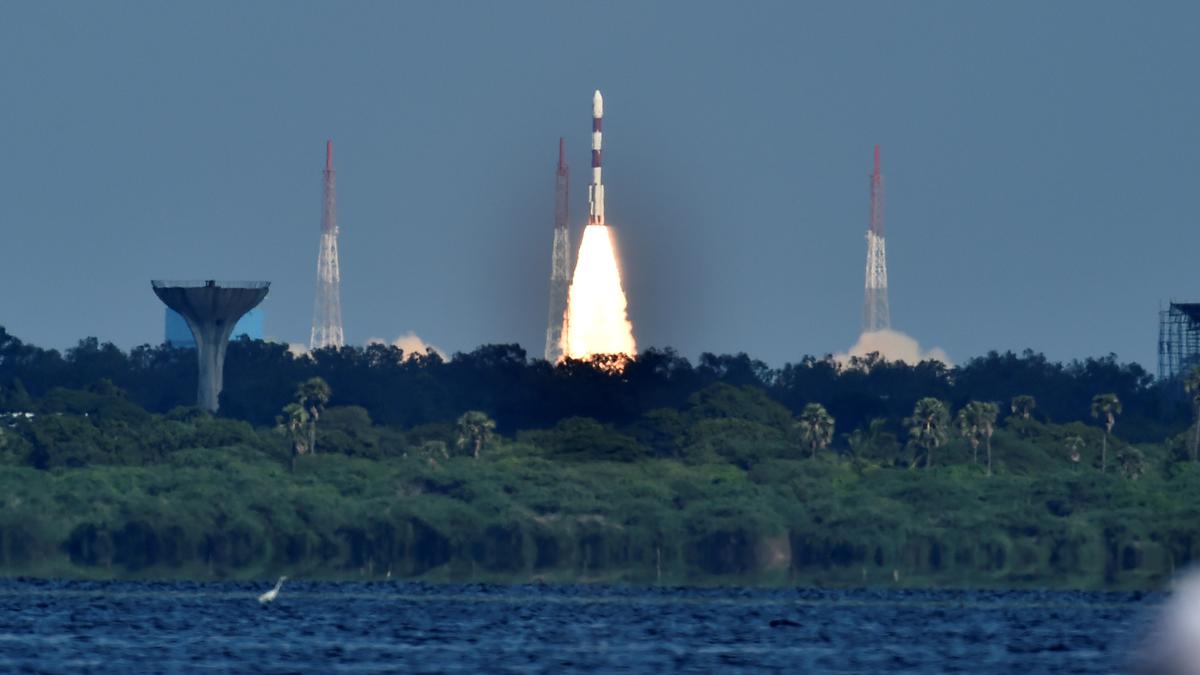Turtle Conservation in Assam’s Temple Ponds

- 26 May 2025
In News:
On World Turtle Day (May 23, 2025), Assam’s Nagshankar Temple was officially declared a model temple for turtle conservation, highlighting the ecological role of temple ponds in preserving India’s turtle biodiversity.
Key Highlights
Nagshankar Temple – A Model for Turtle Conservation
- Location: Sootea town, Biswanath district, ~70 km from Tezpur, Assam.
- Established: Believed to be built in the 4th century AD by King Nagashankar of the Nagakha dynasty.
- Religious Importance: Dedicated to Lord Shiva, but turtles are revered as incarnations of Lord Vishnu.
- Ecological Value: Functions as a micro-wildlife sanctuary — home to 250–300 turtles, along with peacocks, pythons, and deer.
Turtle Conservation Initiatives
Species Conserved:
- Black Softshell Turtle (Nilssonia nigricans) – Critically Endangered
- Indian Softshell Turtle (Nilssonia gangetica)
- Malayan Softshell Turtle
These species thrive in the temple pond, which is fed by the Brahmaputra River basin, offering a suitable natural habitat.
Community & Scientific Collaboration:
- Key Stakeholders:
- Nagshankar Temple Committee
- Turtle Survival Alliance (TSA) India
- Help Earth (NGO)
- Kaziranga National Park & Tiger Reserve
- Assam Forest Department
- Conservation Methods:
- Artificial egg incubation and wild release of hatchlings.
- Dried-fish diet introduced for temple turtles, replacing harmful offerings (e.g., biscuits, puffed rice).
- Capacity-building workshops for forest staff and students to aid in turtle surveys.
Result: 486 hatchlings of the black softshell turtle have been released into the wild from the Nagshankar Temple pond.
Statewide Turtle Conservation Model
- Assam houses ~25 temple ponds actively involved in turtle conservation.
- Notable site: Hayagriva Madhav Temple in Hajo (Kamrup district).
- State Zoo in Guwahati has a dedicated breeding facility (established 2010) for the Assam Roofed Turtle (Pangshura sylhetensis, "Asomi Dura").
Google’s AI Matryoshka Strategy
- 26 May 2025
In News:
At its 2025 I/O Developer Conference, Google unveiled AI Matryoshka, a multi-layered artificial intelligence (AI) ecosystem powered by its latest Gemini 2.5 models. This marks a fundamental restructuring of Google’s platforms around AI, affecting users, developers, and enterprises.
What is AI Matryoshka?
- Concept: Named after the Russian nesting dolls, AI Matryoshka is a layered AI architecture where each outer application or interface draws intelligence from a core AI “brain.”
- Objective: To embed AI deeply and uniformly across Google’s services, enabling agentic, intelligent, and autonomous interactions.
Core AI Models: Gemini 2.5
- Gemini 2.5 Pro:
- Advanced reasoning and mathematics capabilities.
- Achieved high scores on USAMO 2025 (a premier U.S. math olympiad).
- Features a mode called Deep Think for complex problem-solving.
- Gemini 2.5 Flash:
- A more efficient, lightweight model using 20–30% fewer tokens.
- Supports natural audio output and multi-speaker TTS in 24 languages.
- Set to become the default model in Gemini applications.
Foundational Hardware: Ironwood TPUs
- Ironwood (7th Gen TPUs):
- Delivers 42.5 exaFLOPS of compute power per pod.
- Offers 10x performance boost over previous TPUs.
- Supports large-scale training and deployment of generative AI models.
Generative Media Models
- Imagen 4: Advanced image generation.
- Veo 3: High-quality video generation.
- Lyria 2: Music creation using AI.
- Copyright Tools:
- SynthID (watermarking) and SynthID Detector (verification) aim to address copyright concerns over the training data.
Developer Ecosystem
- Gemini API & Vertex AI:
- Model Context Protocol (MCP): Enables agent-to-agent communication.
- Thinking Budgets: Let developers allocate compute resources wisely.
- Project Mariner: Tool for automating complex tasks.
- Thought Summaries: Improves transparency of AI decisions.
- Coding Agent – Jules:
- Beta launched globally.
- Integrates with code repositories to write tests, build features, and fix bugs using Gemini 2.5 Pro.
User-Centric Features
- Search Integration (AI Mode):
- Rolls out first in the U.S. with Deep Search generating cited, multimodal answers.
- Offers virtual shopping try-ons and agentic checkout, raising privacy and data security concerns.
- Gemini App:
- Available on Android and iOS with Live and image generation features.
- Deep Research allows analysis of private documents and images, necessitating strong data protection protocols.
- Integrated into Chrome (for Pro and Ultra users) for webpage summarization.
- Canvas Feature: A creative workspace for interactive infographics, quizzes, and audio content in 45 languages.
Subscription Tiers and Privacy Concerns
- Google AI Ultra Tier:
- Offers premium access to advanced capabilities, including video generation with native audio.
- Raises questions about "privacy premium" – whether better AI safety features will be available only to paying users.
India’s Coastline Redefined
- 26 May 2025
In News:
The Ministry of Home Affairs, in its 2023–24 annual report (Dec 2024), announced a significant update to India’s coastline length — revised from 7,516.6 km to 11,098.8 km. This change was not due to any new territorial acquisition or geological activity but resulted from improved measurement techniques, reflecting the "coastline paradox" in geography.
What Is the Coastline Paradox?
The coastline paradox, first explained by British mathematician Lewis Fry Richardson and later expanded by Benoît Mandelbrot, shows that the length of a coastline increases with finer measurement scales. This is because coastlines, like fractals, reveal more detail (creeks, estuaries, inlets) the more closely they are examined.
- Using large-scale maps (e.g., 1:4,500,000), previous estimates missed finer details.
- Modern tools allow capturing every tidal creek, sandbar, and estuarine curve, dramatically increasing measured length.
Measurement Methodology (2024 Update)
Aspect Details
Agencies Involved National Hydrographic Office (NHO), Survey of India
Previous Map Scale 1:4,500,000 (1970s)
New Map Scale 1:250,000 (electronic navigation charts)
Key Technologies GIS, LIDAR-GPS, satellite altimetry, drone imaging
Reference Line Used Highwater Line (based on 2011 data)
Mapped Features Included Tidal creeks, sandbars, estuaries, low-tide islands
Review Frequency Every 10 years from 2024–25
Geographical and Strategic Overview
- India’s New Coastline Length: 11,098.8 km
- No New Land Added: No change in land boundaries or annexation.
- Coastal States & UTs: 11 coastal States + 2 UTs (Andaman & Nicobar Islands, Lakshadweep)
- State with Longest Coastline: Gujarat (~1,600 km)
Why This Matters
1. Maritime Security
- Longer coast = More area to monitor and protect.
- Post-26/11, India enhanced coastal surveillance (radar grid, coastal police).
- Navy and Coast Guard deployment strategies need updates.
2. Disaster Management
- Accurate coastline data helps in cyclone, tsunami early warning systems (e.g., Odisha).
- Supports better Coastal Regulation Zone (CRZ) mapping.
3. Economic and Strategic Planning
- Affects Exclusive Economic Zone (EEZ) and fishing rights.
- Informs infrastructure development: ports, shipping, Sagarmala, tourism.
- Boosts India’s aspirations in the Blue Economy.
Schistura densiclava

- 26 May 2025
In News:
A newly discovered species of cave-dwelling loach, Schistura densiclava, has been recorded from the Krem Mawjymbuin cave in the East Khasi Hills district of Meghalaya, India. This species becomes the sixth known cave-dwelling fish from the state, emphasizing Meghalaya’s rich subterranean biodiversity.
Taxonomy and Classification
- Family: Nemacheilidae (bottom-dwelling freshwater fishes)
- Type: Troglophile — adapted to live in caves but can survive and reproduce in surface (epigean) waters.
- Distinct Feature: Unlike typical cave fishes, S. densiclava retains pigmentation and functional eyes, indicating adaptability to both subterranean and overground aquatic environments.
Habitat and Environment
- Found 60 meters inside the Krem Mawjymbuin, a limestone cave with a surveyed length of 1.6 km and an altitude of 206 meters.
- The species inhabits a cool, fast-flowing stream with a temperature of 18°C and low oxygen levels.
- The cave is ecologically sensitive and was previously in the news due to a local ban on worship at a Shivalinga-like formation within it.
Morphological Characteristics
- Coloration: Pale yellow-green body with 14–20 greyish to faint black vertical bars.
- Named densiclava due to the thick dark stripe near the dorsal fin ("densiclava" = Latin for "thick stripe").
- Sexual Dimorphism:
- Males: Slimmer with irregular patterns and puffier cheeks.
- Females: Sturdier with more consistent markings.
Scientific Significance
- Genetic testing confirmed Schistura densiclava as a distinct and previously unrecorded species.
- Its endemic distribution, limited to a single cave system, marks it as a species of high conservation concern.
- The discovery was published in the Journal of Fish Biology by a team led by Kangkan Sarma from Gauhati University, along with other Indian ichthyologists.
Tamil Nadu’s Space Industrial Policy and IN-SPACe

- 26 May 2025
In News:
Recently, the Tamil Nadu Cabinet approved its Space Industrial Policy, becoming the third state after Karnataka and Gujarat to adopt a dedicated strategy to stimulate investments and innovation in the space sector. This move aligns with the national framework set by the Indian Space Policy 2023 and supports India's growing space economy.
IN-SPACe and its Role:
- IN-SPACe (Indian National Space Promotion and Authorisation Centre) is an autonomous, single-window agency under the Department of Space (DoS).
- Created as part of India’s space sector reforms, it promotes and authorises the participation of Non-Governmental Entities (NGEs) in space activities.
- Functions include:
- Supporting private entities in the development of launch vehicles, satellites, and space-based services.
- Facilitating access to ISRO infrastructure and co-development initiatives.
- Providing support for research, innovation, and educational collaboration.
- Headquartered at Bopal, Ahmedabad, it serves as the bridge between ISRO and private sector stakeholders.
- IN-SPACe encouraged Tamil Nadu to formulate the Space Industrial Policy to promote the state’s role in India’s space mission.
Tamil Nadu’s Strategic Space Assets:
- ISRO Propulsion Complex (IPRC), Mahendragiri (Tirunelveli): Engaged in testing cryogenic engines, liquid propulsion systems, and R&D activities.
- Second Spaceport at Kulasekarapattinam (Thoothukudi): Enhances satellite launch capacity, especially for small satellites and polar launches.
- Presence of space-tech startups in areas like:
- Reusable launch vehicles
- In-space manufacturing
- In-orbit refuelling
- Satellite data analytics
- Space Technology Incubation Centre (STIC) at NIT Trichy supports southern-region ISRO projects and academia-industry collaboration.
- Over 250 ISRO vendors operate in the state, creating a robust supply chain ecosystem.
Objectives of Tamil Nadu's Space Industrial Policy:
- Target investment: ?10,000 crore over the next 5 years.
- Employment generation: Estimated 10,000 direct and indirect jobs.
- Strengthens Tamil Nadu’s capabilities in:
- Electronics and precision manufacturing
- Strategic electronics and space-grade components
- Promotes integration of space technologies in governance (e.g., disaster management, fisheries, agriculture, health, transport).
Policy Incentives:
- Payroll subsidy for companies engaged in R&D or setting up Global Capability Centres.
- Space Bays: Select regions will be designated to offer structured incentive packages for investments below ?300 crore.
- Industrial housing incentive: 10% subsidy (capped at ?10 crore) for building residential facilities in space industrial parks.
- Green initiatives: 25% capital subsidy (capped at ?5 crore) for environmentally sustainable developments.
Institutional Support:
- TIDCO (Tamil Nadu Industrial Development Corporation) signed an MoU with IN-SPACe to facilitate:
- Manufacturing activities
- Strategic collaborations with private companies
- R&D and design-based projects in the space domain
